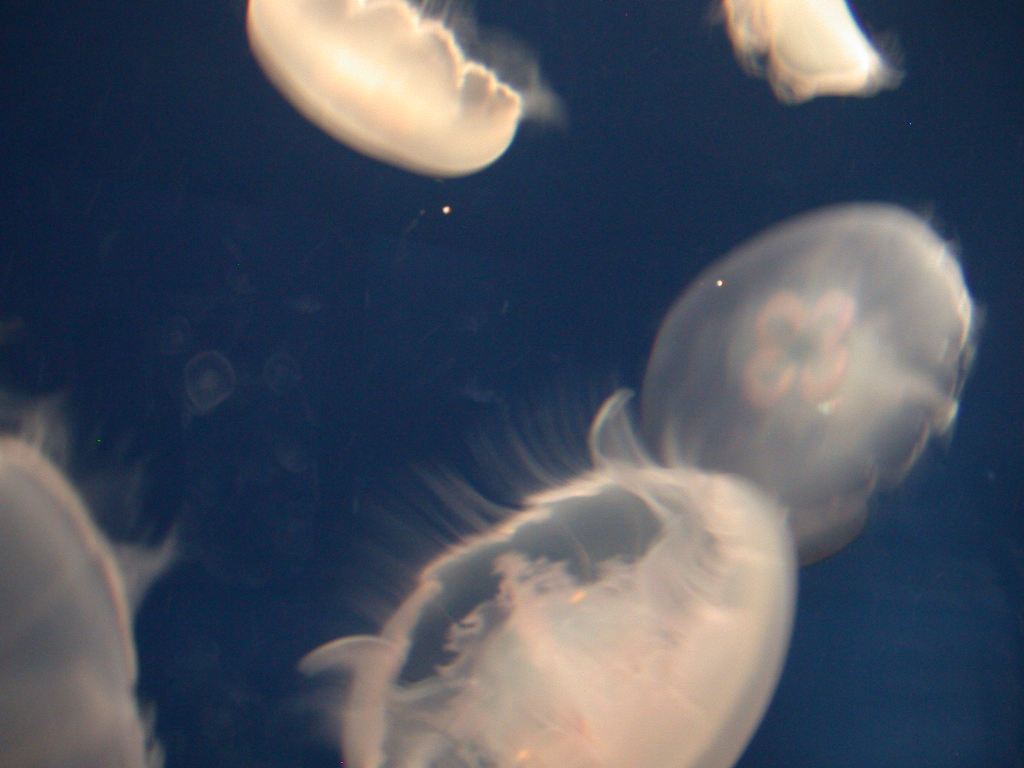Movement
|
Picture by Tom Volk
Movement of Moon Jellyfish is truly beautiful to watch. They begin their lives as larvae which swim by use of cilia. Polyps and medusae have a very simplistic muscle-like tissue created from their ectoderm or endoderm. Polyps use their gastrovascular cavity as a sort of hydrostatic skeleton which, with the assist of the muscle-like cells, contracts and extends the body. They can also move by creeping along their substrate using the muscle cells in their base. Medusa move in a somewhat different way. The base of their bell-like upper body is composed of a ring of muscle-like cells called coronal muscle. The impulse for these muscles to contract is received from the subumbrellar nerve net. When the cells contract in a rhythmic pattern, movement by jet propulsion occurs. Water flows in the opposite direction of the medusa's movement. Propulsions are controlled by the rhopalial centers. Swimming is usually more of a way to keep the jellyfish near the surface of the water than a means of travel through the water. Often, movement of jellyfish from place to place is simply a result of water currents. Visit http://www.youtube.com/watch?v=duWdlP7VJV4 to view a video by Steve Mannian of Moon Jellyfish swimming in an aquarium at the Horniman Museum in South London. |










